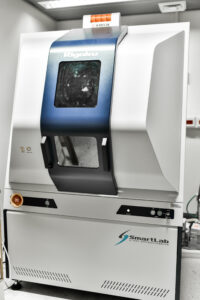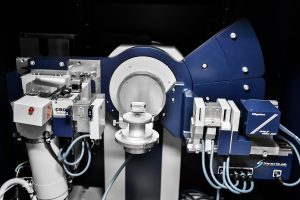X-ray diffraction (XRD):
X-ray diffraction (XRD) is a non-destructive experimental technique aimed for all kinds of matter—ranging from fluids, to powders and crystals. This type of technique provide advanced, versatile, and cost-effective diffraction solutions for wide range of users from research, development, and quality control.
XRD is a scientific tool used in order to identify the atomic and molecular arrangement of crystalline molecules within the crystal structure. This molecular arrangement is determined by measuring the diffraction pattern obtained after the interaction of x-ray beam with a crystal structure. By measuring the diffraction angles and intensities, one can determine the mean positions of the atoms in the crystal.
The Russell Berrie Nanoparticles and Nanometric Systems Characterization Center is equipped with Rigaku SmartLab 3kW diffractometer instrument. The Rikagu SmartLab high-resolution diffraction system represents the state of the art x-ray diffraction instrument with fully automated modular systems. The system incorporates a high-resolution theta/theta closed loop goniometer drive system, cross beam optics (CBO), a 3.0 kW sealed tube anode generator, and D/tex Ultra 250 1D silicon strip detector. The instrument optical systems are fully automated thus providing advance measuring ability for both expert and novice users.
Our instrument is equipped with an Anton Paar TTK 450 mid-low temperature chamber providing sample cooling and heating in the range of -193°C to 450°C using liquid nitrogen. Such apparatus offers large temperature range and ease of use for a wide range of applications for liquid to solid materials. Vacuum (10⁻² mbar) conditions could also be used in this setup.

